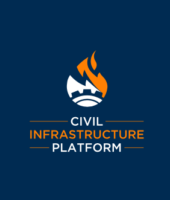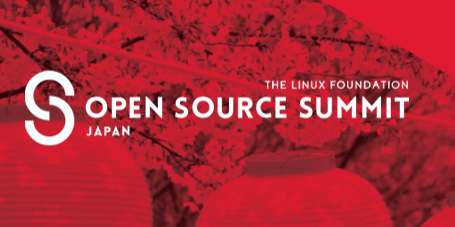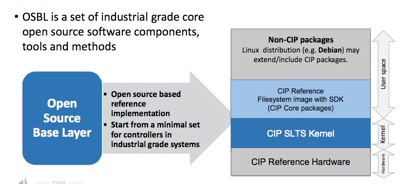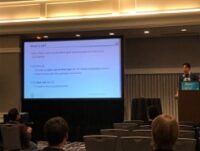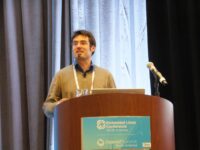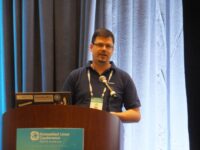The New CIP SLTS Kernel Expands the Support Architecture to include ARM64
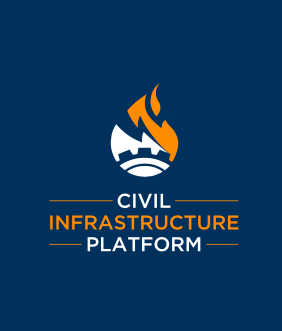
SAN FRANCISCO – February 25, 2019 – The Civil Infrastructure Platform (CIP) Project, which enables long-term management of infrastructure systems through a base layer of industrial grade open source software components, tools and methods, today announced the release of the Super Long Term Support (SLTS) Kernel. The new kernel expands architectural support for the 64-bit Arm® Cortex, which enables developers to use it in a variety of use cases including building automation, machine learning and artificial intelligence.
As requirements for reliability, connectivity and feature-richness increase, the amount of software needed to implement and maintain civil infrastructure systems has grown to unprecedented levels. These systems are the foundation for modern society and are ubiquitously responsible for supervision, control, and management of infrastructure for communities and industries across the globe. With these demands, there are unique challenges for safety, security and reliability requirements as updates are needed on an ongoing basis.
Hosted by the Linux Foundation, CIP aims to speed implementation of Linux-based civil infrastructure systems through industrial grade software and a universal operating system, build upon existing open source foundations and expertise, establish de facto standards by providing a base layer reference implementation, and contribute to and influence upstream projects regarding industrial needs.
“We depend on technical systems on a daily basis to keep us safe. Often times these are Linux-based systems that have to be maintained for more than ten years,” said Yoshitake Kobayashi, CIP Chair of the Technical Steering Committee and Senior Manager of The Open-Source Technology Department, Toshiba Corporation. “It is critical for us to better prepare our civil infrastructure systems, and the SLTS CIP kernel gets us one step closer to sustainability for up to multiple decades. With the new support for Arm64, the kernel can be applied to broader applications that are the future backbone of our lives.”
CROSS-INDUSTRY COLLABORATION AND DEVELOPMENT
Real-time Linux is a critical component for industrial grade systems. In addition to real-time management and data, industrial systems require safety, security and reliability, which is why CIP plans to collaborate with the new Enabling Linux in Safety Applications (ELISA) project at the Linux Foundation. ELISA is an open source project to create a shared set of tools and processes to help companies build and certify Linux-based safety-critical applications and systems whose failure could result in loss of human life, significant property damage or environmental damage. Building off the work being done by SIL2LinuxMP project and Real-Time Linux project, ELISA will make it easier for companies to build safety-critical systems such as robotic devices, medical devices, smart factories, transportation systems and autonomous driving using Linux.
“Long-term maintenance and support is essential for the safety, security, and reliability required by embedded systems operating in industrial and infrastructure environments,” said Kate Stewart, Senior Director of Strategic Programs at the Linux Foundation. “With ELISA, we are collaborating with the broader Linux Foundation community like CIP to make this initiative successful. We look forward to working with CIP and its members on establishing processes and tooling to support certification of Linux-based safety-critical applications.”
CIP has also launched two new working groups to help manage specific aspects of the development process.
The Security Working Group will work with various security standards that help to address cyber security issues. Led by Renesas Electronics, the focus of the workgroup is for suppliers to certify using IEC 62443-4-x standards, which is one of the most important security specification for industrial products. They will keep the CIP platform up to date by certifying against various available standards and minimize the development time and cost for suppliers by creating a well-defined process for certification.
The Software Update Working Group will provide a robust software update tool that integrates and strengthens the industrial-grade open source base layer. Led by the Toshiba Corporation, the working group will focus on the software architecture, integrating chosen software into the Linux image build tools used by CIP Core and implementing the software update reference boards.
CIP is driven by some of the world’s most innovative industry leaders such as Codethink, Cybertrust, Hitachi, Moxa, Plat’Home, Renesas, Siemens and Toshiba and closely collaborates with other open source projects, such as Linux Kernel LTS, Debian Project, KernelCI. Many members plan to support the SLTS CIP kernel including Renesas, which recently announce RZ/G2 MPUs that will serve as a reference hardware for Arm64 for the certification and release of CIP Linux packages.
The source files for the CIP SLTS kernel can be found here: https://git.kernel.org/pub/scm/linux/kernel/git/cip/linux-cip.git/log/?h=linux-4.19.y.
Additional CIP Resources:
- CIP Website: https://www.cip-project.org/
- CIP Wiki Page: https://wiki.linuxfoundation.org/civilinfrastructureplatform/start
- CIP Core: https://www.cip-project.org/blog/2017/10/23/cip-launches-cip-core
- Board At Desk: https://www.cip-project.org/blog/2017/10/18/cip-launches-bd-v1-0
About CIP
The Civil Infrastructure Platform (CIP) is an open source project hosted by The Linux Foundation. The project is focused on establishing an open source base layer of industrial grade software to enable the use and implementation of reusable software building blocks that meet the safety, reliability and other requirements of industrial and civil infrastructure. For additional information, visit https://www.cip-project.org/.
About The Linux Foundation
Founded in 2000, the Linux Foundation is supported by more than 1,000 members and is the world’s leading home for collaboration on open source software, open standards, open data, and open hardware. Linux Foundation’s projects are critical to the world’s infrastructure including Linux, Kubernetes, Node.js, and more. The Linux Foundation’s methodology focuses on leveraging best practices and addressing the needs of contributors, users and solution providers to create sustainable models for open collaboration. For more information, please visit us at linuxfoundation.org.





